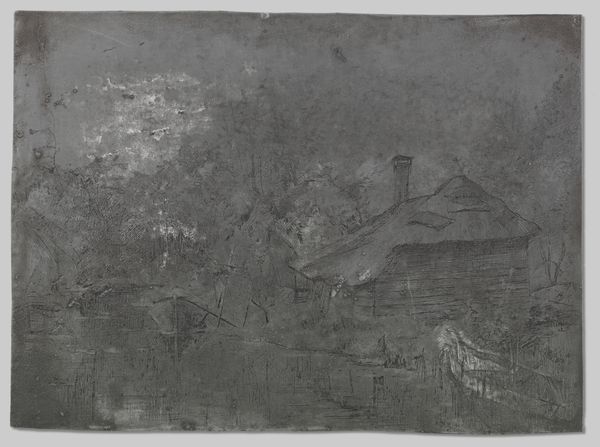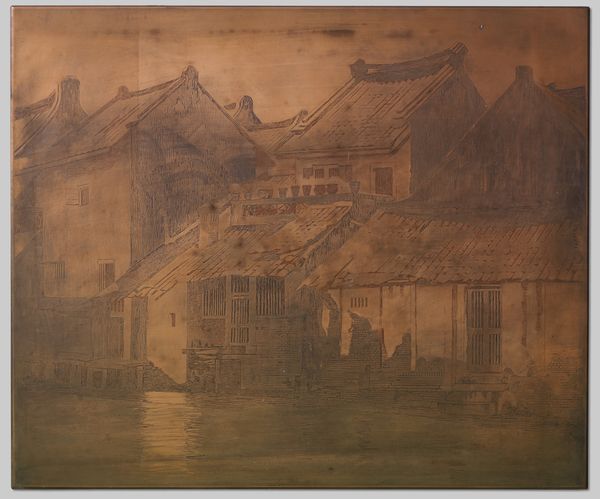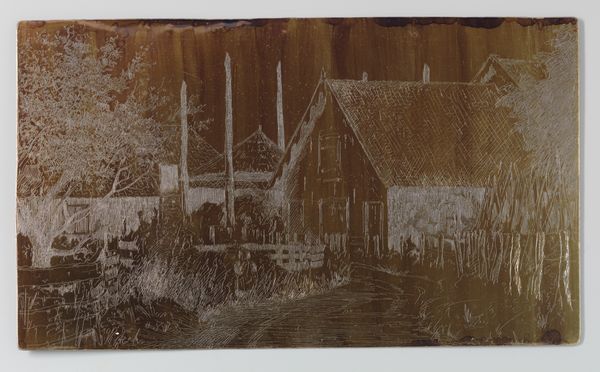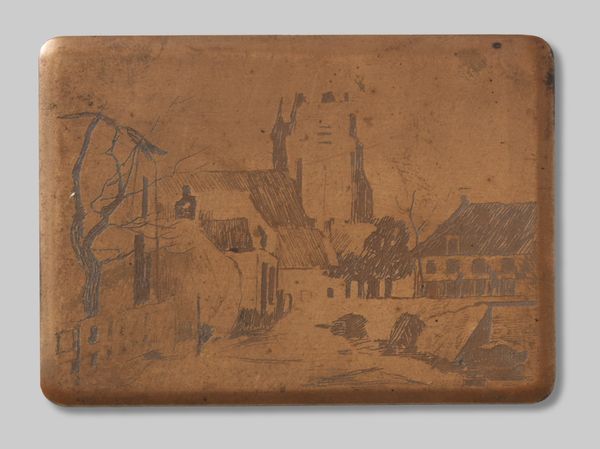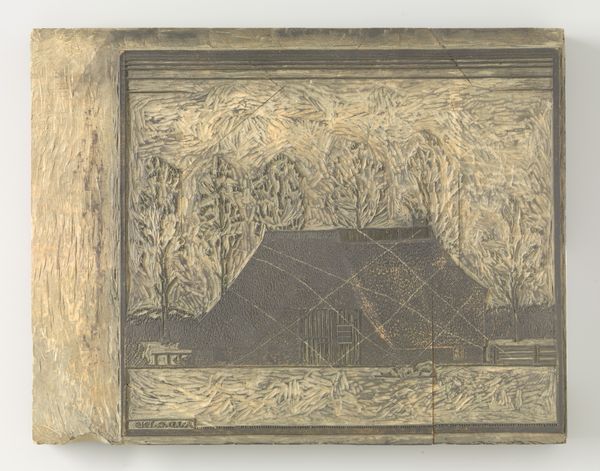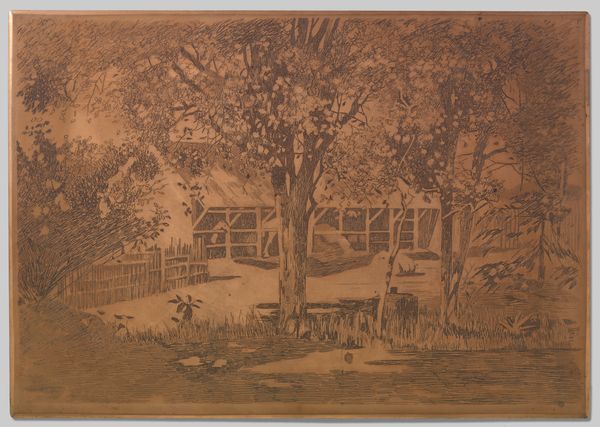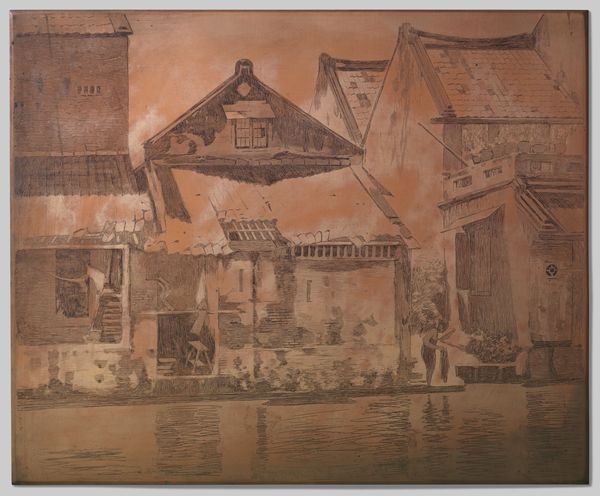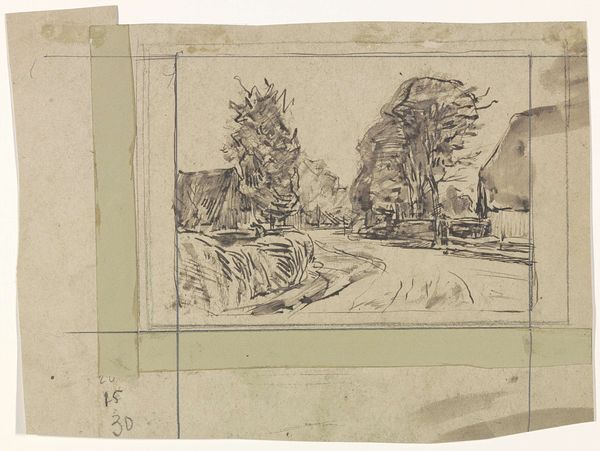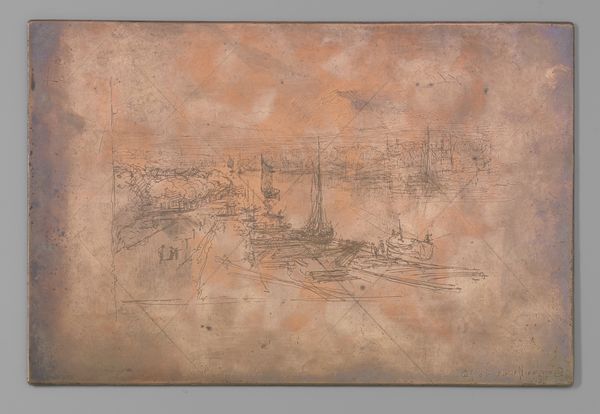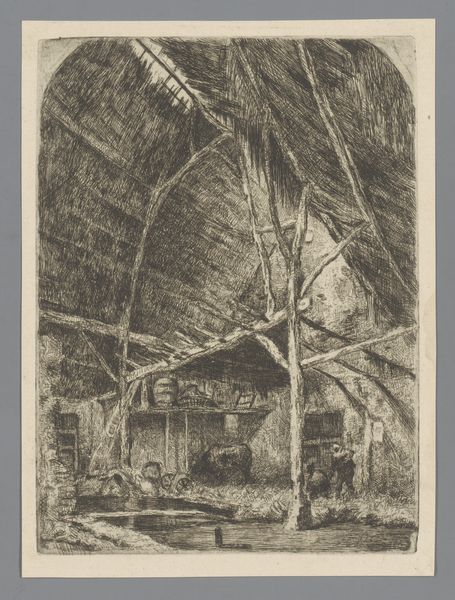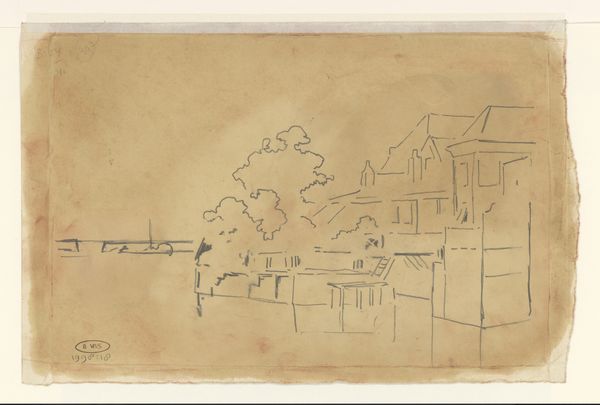
drawing, paper, ink, pencil
#
drawing
#
ink painting
#
pencil sketch
#
landscape
#
paper
#
ink
#
pencil
Dimensions: height 250 mm, width 321 mm
Copyright: Rijks Museum: Open Domain
Editor: So, this drawing is called "In de kampong, pisangboom op de voorgrond," created around 1921 by Willem Witsen. It’s done with pencil and ink on paper, and it feels quite serene and… humble, almost. The textures created with the ink and pencil really make the scene feel alive. What catches your eye in this piece? Curator: I'm drawn to the prominent banana tree, the "pisangboom," in the foreground. It immediately positions the viewer within a specific cultural and colonial landscape. Consider how the artist chooses to render it— almost like a symbolic marker of place, subtly emphasizing the relationship between the Western gaze and the ‘exotic’ locale. Do you sense a potential narrative within this composition, or does it primarily serve as a scenic observation? Editor: I see it more as a tranquil observation. The figures are understated, just going about their daily lives. The banana tree grounds it, but not in a possessive way. It's part of the scene. Curator: The domestic setting indeed creates a narrative where human presence blends organically with the landscape. There's a quietness in this simplicity. How does Witsen use line and shading to evoke not just a place but also a feeling associated with that place? Is it welcoming, distant, or something else? Editor: It feels a bit distant, but more because of the era it’s from, not the artist's intention. The meticulous detail almost feels like an attempt to bridge that distance, a desire to understand. Curator: That resonates. By exploring those layers of context—colonialism, artistic intention, reception over time— we unearth so much more than just what’s visibly represented. The symbolic language embedded in visual culture allows us to have conversations about history, memory, and identity. Editor: Definitely. I went in thinking landscape, but now I’m seeing it as a really nuanced document of a specific time and perspective.
Comments
No comments
Be the first to comment and join the conversation on the ultimate creative platform.
